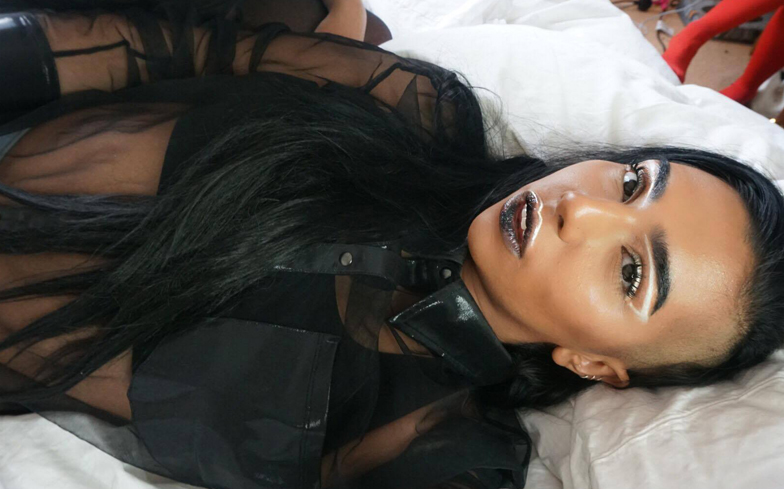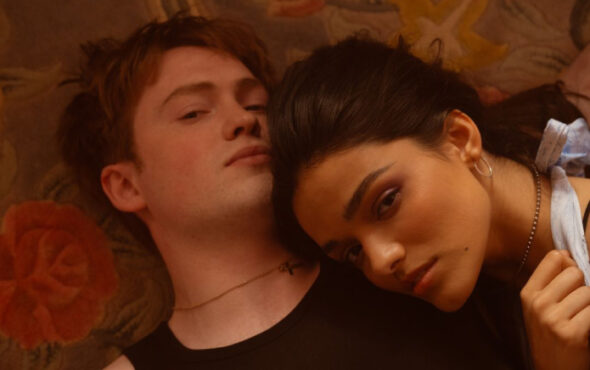
As a child, I was always trying to change my face whether with hair removal cream or paint.
My face felt limited and I wanted more. Selfies on disposable cameras and home videos were my number one hobby. I would film myself cooking and sharing useful instructions with no one. I carried on being obsessed with images, soaking up museum visits, films, music videos, and magazines. I would save Tumblr images and screenshot Instagram posts, building this archive in my mind and my phone. I was sometimes just looking to see something I hadn’t seen yet, sometimes looking for myself.
Naturally, I went on to study Art History at University, hoping to become a part of this secret world which understood everything visual. I kept writing about bodies, about women, about race, and I found myself completely alone.
As I fell in love with artists and words, I realised they were all queer. I realised that men I loved made me emptier and less alive and that they preferred me that way. For my final dissertation I wrote about a portrait of a black woman painted by a white woman in 1800’s France. My criticism of her, my anger towards her and all these people who painted us without us opening our mouths was ill-received. How many times had white people taken our dark nipples and our closed mouths and made them into something to elevate whiteness? How many more times must I witness this happen to loud applause, or lay my naked self down just to be painted as if I didn’t have my own hands?
By then I had stopped drawing and stopped painting canvases. I was writing and I was painting faces and hands. My aunt’s face, my mother’s face. I painted their hands with mehndi with deep focus and small bites of mithai entering my lips from my mother’s free hand. When I did that I was loving them, and when I loved them I loved myself. I found that we were flat and dead in white media, in white art. I found that we were so alive, and so beautiful in our own hands.

© Lill-Veronica Skoglund
During my years at university I met activists and I learned, slowly a vocabulary of resistance. I learnt about disability as an identity and as a place of resistance. I learnt about gender beyond the binary and a lot started to make sense. I was in and out of pain; chronic fatigue, agoraphobia, intense anxiety and depression. I had various diagnoses and treatments over the years but I was still so disconnected from what felt like a faulty body and brain. I found that other people of colour, other queer people, and other disabled people felt many of the same disconnects – the same griefs.
As my career in makeup progresses, healing has been at the centre of my practice. I found that Western ideas of art never fitted me, so before I never felt I was a real artist. Now I see that the individualist, capitalist, white/cis/hetero/abled/male artist was never me and was never art. Art is essential to healing, as is self-care.
Women have always formed these spaces where we beautify, unwind, bitch and moan, and those spaces have kept us going. I saw through the work of artists like Inua Ellams and the men around me, that men of colour go to the barber to love themselves and speak vulnerability out loud. We allow ourselves so little love under capitalism.
My version of loving is sitting in that space with people of all genders and all skin tones, and letting them place their image in my loving hands. They tell me what they wish to look like, how they wish to feel in this face. They tell me they met someone cute, they hope they don’t get heartbroken. They tell me how they get harassed and violated in the streets for wearing nail polish. And I have them lift their chin and look into their own gilded eyes and I show them that they are art. That they exist so beautifully beyond violence. They occupy that for a time, and we monumentalise it with pictures, with a song, which can travel around the world, into the bedroom of a child with no gender or the wrong gender, which can make them forget for a moment how much they are hated.
You can follow Umber on Instagram here, and see more of her work on her official website here.



